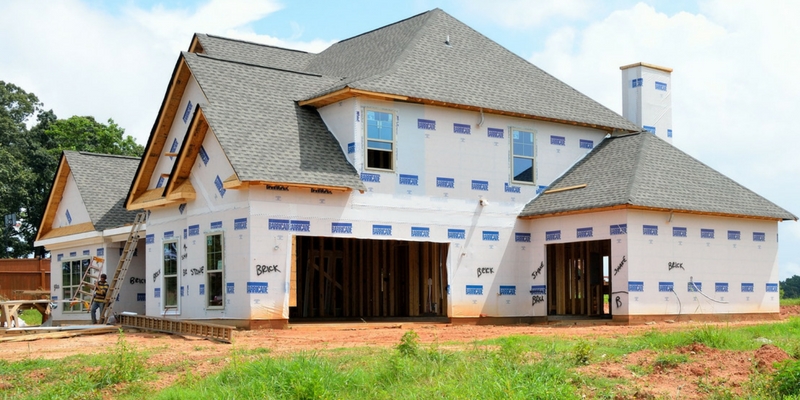Another year, another census report showing blistering growth in Baldwin County.
The Census Bureau population estimates released Thursday show that the coastal Alabama county added another 5,119 people from July 2016 to July last year. That was the most of any Alabama county, ahead of the 4,734 increase posted by second-place Madison County.
Since the 2010 census, Baldwin has added 30,363 residents, also the most in the state.
Baldwin’s growth rate also leads the state — 2.47 percent year over year and 16.66 percent since 2010.
What’s more, Baldwin’s overall population of 212,628 puts it just 977 people behind its fast-growing cousin, Shelby County. And since the census estimates offer a snapshot from almost nine months ago, it is likely that Baldwin already has passed Shelby and moved into fifth place among the state’s most populous counties.
Considering that Montgomery County — population 226,646 — has experienced a net decrease of 2,717 residents since the last census, Baldwin has an outside shot to move into fourth place by the next census in 2020.
“It’s a great place to live,” Baldwin County Commission Chairman Frank Burt said when asked to explain why so many people keep moving in. “I’ve been here since 1941.”
For the most part, the counties that have experienced strong growth during the past decade continued to lead the way between 2016 and 2017. Only one of the top 10 growth counties since 2010 lost population in the most recent year. That was Russell County near the Georgia border, which shrank by nearly 2 percent.
Population growth continues to be concentrated in a handful of counties in the largest metropolitan areas —Baldwin, outside of Mobile; Madison and Limestone, near Huntsville; Shelby and St. Clair, in the Birmingham area; and Coffee County, in the Dothan metro area. The counties with the two largest state universities, Tuscaloosa and Lee, also have enjoyed rapid growth.
Most of the rest of the state has been stagnant or shrinking, though. Only 25 of Alabama’s 67 counties posted any growth at all from mid-2016 to mid-2017.
For the decade, that number is even smaller. Only 21 counties have increased in population since the 2010 census.
“Essentially, there’s no surprise this time,” said Viktoria Riiman, a socioeconomic analyst with the University of Alabama’s Culverhouse College of Commerce. “It’s a continuation of the trends that we’ve seen the past six years.”
Riiman noted that Baldwin’s growth primarily has come from migration — particularly from other counties within the United States. Baldwin ranks only 11th in so-called natural population growth — births minus deaths — with a net gain of 1,769 people since the beginning of the decade. That compares with Jefferson County, which ranked first with a net gain of 12,936.
Baldwin led the state in net migration during that time, however, with 28,363 more people moving in than moving out. The next closest was Madison, with a net gain of 17,235 from migration.
The vast majority of Baldwin’s newcomers have come from other Alabama or counties or other states. The net gain of 1,156 in international migration trails, Jefferson, Lee, Mobile, Madison, Montgomery, Tuscaloosa and Shelby counties.
Fueled by Birmingham residents seeking a suburban lifestyle, Shelby County led Alabama in population growth for decades. It doubled in population from 1960 to 1980 and doubled again over the next two decades.
Although it still is experiencing the fourth-fastest growth, the pace has slowed somewhat in recent years.
“It’s been growing for a while,” Riiman said. “It’s expected to grow, just not at this huge rate Baldwin County has been experiencing.”
The University of Alabama’s Center for Business and Economic Research, using 2015 data, projects that Montgomery County will hang on to its fourth spot by the 2020 census. But it’s only a matter of time; by 2025, the center projects, both Baldwin and Shelby will have passed Montgomery.
To Burt, the Baldwin County commissioner, it’s not a surprise. He said he saw it coming when he first took office 30 years ago and the county had only about 78,000 residents.
“When I came on the commission, I was predicting at that time … I just knew that some day, not only would we be bigger than Montgomery, we’d be bigger than Mobile,” he said. “I just knew it in my heart. I don’t know that I’ll live to see it.”
On the other side of the coin, many rural Alabama counties continued to struggle as they have for years. Macon, Perry, Lowndes and Dallas all have experienced population declines of more than 10 percent since the last census year.
Riiman said the pattern is familiar. A lack of economic opportunities scares off potential newcomers and drives out younger natives. With so many younger people leaving, it leaves fewer women of child-bearing years to replace the population naturally, leaving the counties demographically older.
Since the 2010 census, deaths have outnumbered births in 38 Alabama counties. And most of them are not making up the difference through in-migration.
“That is the trend that has been visible throughout the U.S.,” she said. “Rural areas are losing population.”
Brendan Kirby is senior political reporter at LifeZette.com and a Yellowhammer contributor. He also is the author of “Wicked Mobile.” Follow him on Twitter.
Don’t miss out! Subscribe today to have Alabama’s leading headlines delivered to your inbox.
